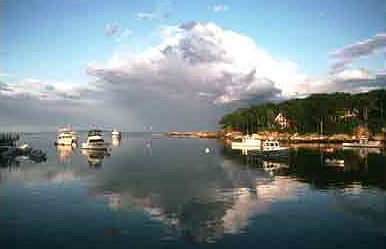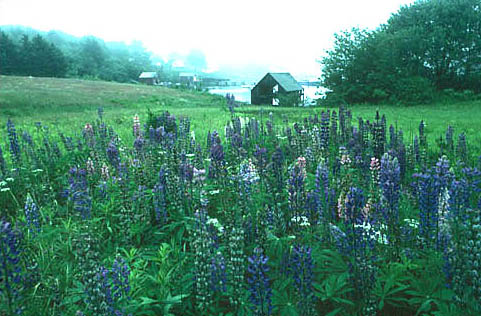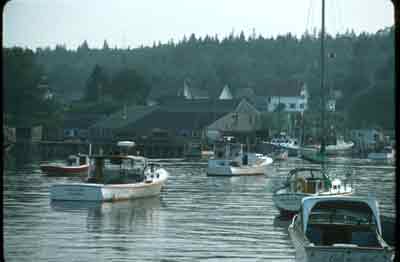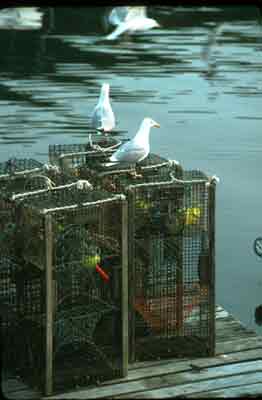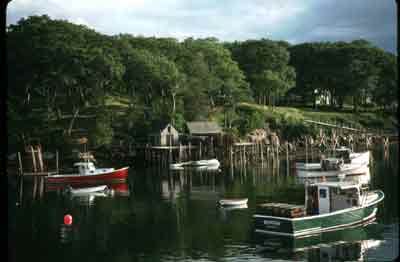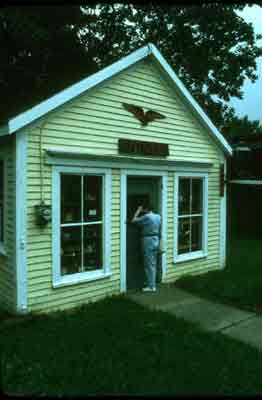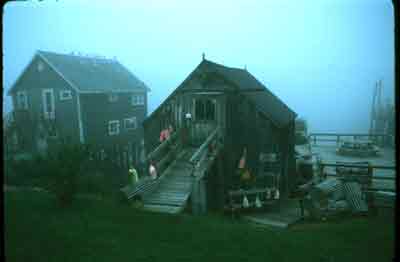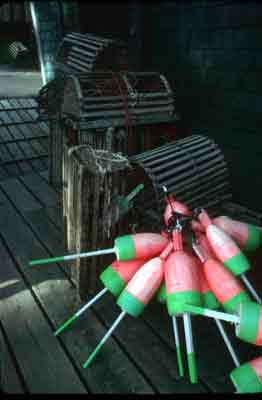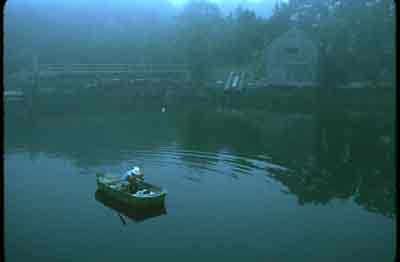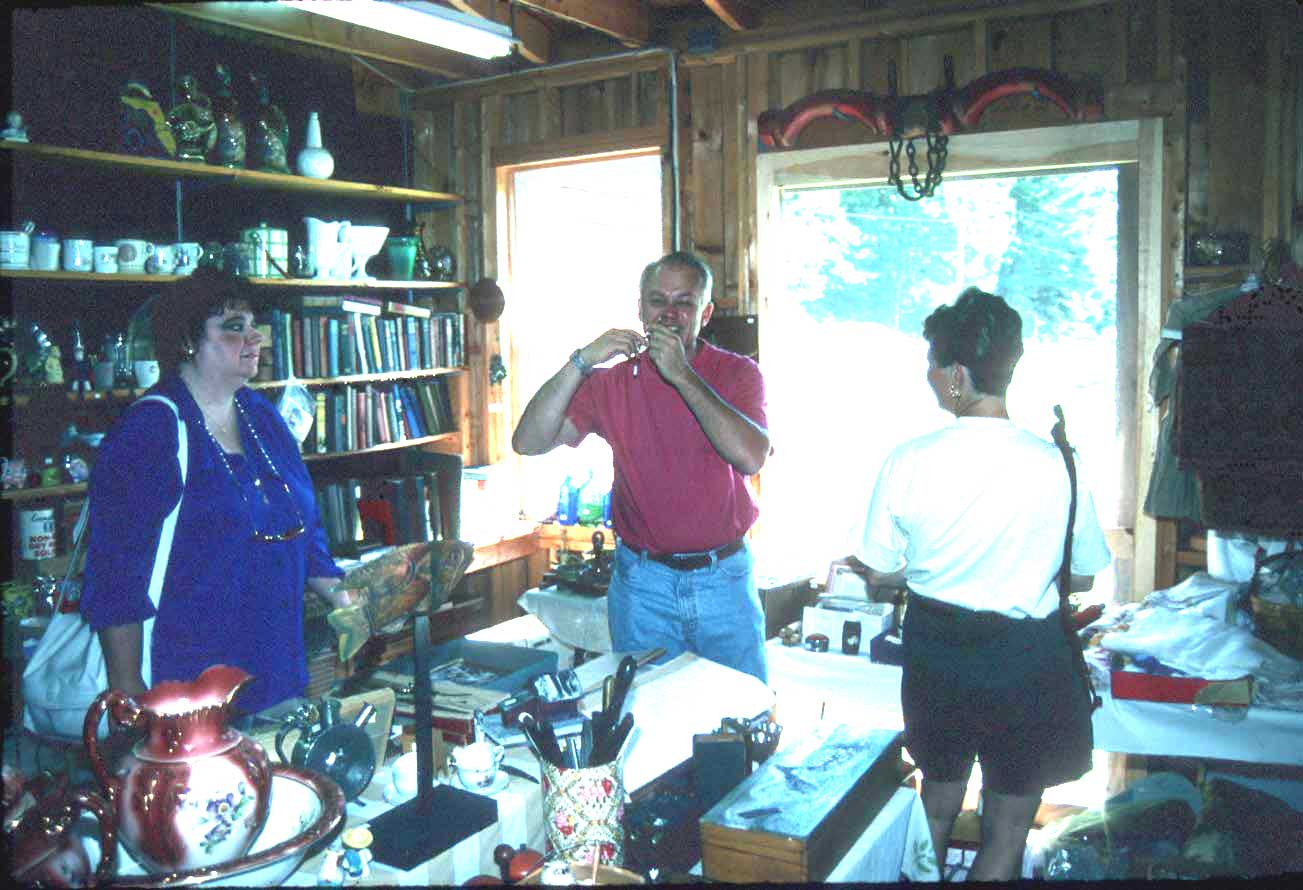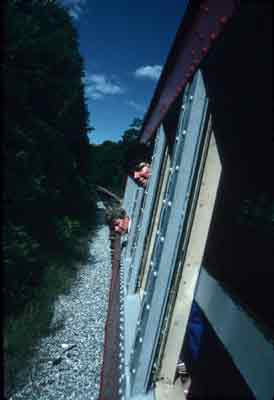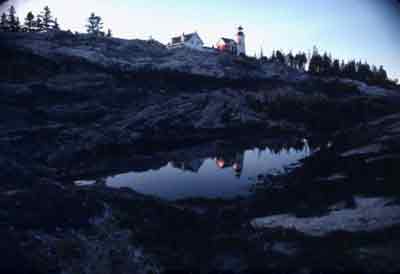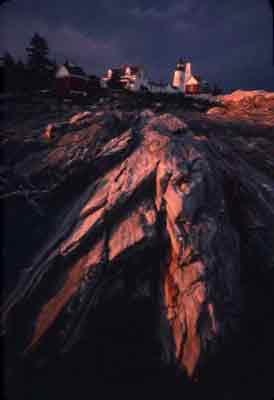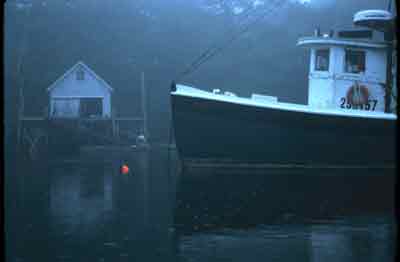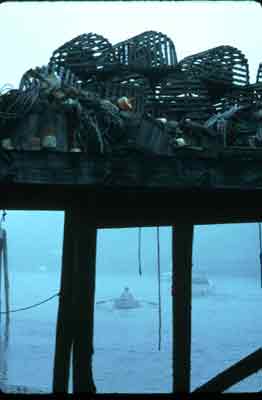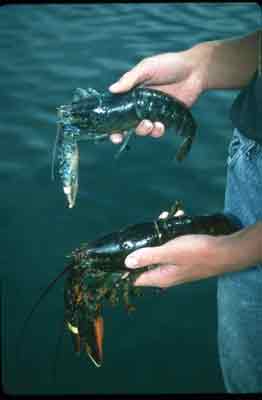|
New Harbor - The Gem of Mid-coast Maine
By Jim. Moerschel
The meandering coast of on
the satisfy the most discriminating traveler. The coastline is generally rugged, with countless fingers of land stretching into the
blue birds, mammals and prolific sealife, which accounts for the hundreds of fishermen and lobstermen, who live in the quaint and picturesque villages that dot the seascape. Several years ago, I was introduced to New harbor by my longtime friend, Jim Sullivan, who, with his wife Sue and their children spent many summers here, staying at Thomson’s cabins. New harbor is located in the mid coast region and it is a place that we have returned to many times over the years.
As a photographer, I love the area and so do the multitude of artists, who either live here or travel from afar to dab paint or pastels upon the canvas amidst tranquil settings. When “artsy” people make a place “their studio” it tells much about its physical character.
Many of the houses in the region date back to the early l800’s and some even as far back as the mid 1700’s lending a quaint charm and a vibrant history that the local people proudly embrace. On the edge of the coves and harbors, one can see several fishing shacks and boat houses, their exterior walls displaying nets, buoys and traps with their images reflecting mirror-like in crystal clear water. And, of course there are plenty of boats, some moored, some in dry dock for repairs and others carrying their fishermen and lobstermen out to the fertile sea.
The unpredictable and often changing weather creates an interesting array of lighting conditions for photography. Some mornings I am greeted with dense fog that casts an eerie, ghostly appearance to the scene. Then, within an hour or two, the rising sun pierces the milky shroud enabling the photographer a clear view of close subjects set against a
still murky background. Flower
photography can occupy much of the late in the day the “magic light” returns for spectacular sunsets and sometimes rainbows.
The area is even photogenic during the sporatic rainy days and if the rain persists there is plenty to do here. This region is “antique and craft” heaven. While the “guys” fish, hike and photograph, our wives roam the countryside in search of the ever elusive treasures of yesteryear. At days end, they return with such things as spoon racks, clay marbles, tea cups, tin ware, old post cards, etc. Some even have names that are as comical as the items look. Our friend, Diane Rainey now owns a “nitty nod.” A stocking stretcher got the most laughs one year as the guys tried to guess what it was. “Sully” thought it was a hockey goalies stick with holes in it. All in all, antique hunting is a delightful way to
spend time in the quaint villages of rural
The towns of Wiscasset, Waldoboro, Damariscotta, more of the past rather than the present as you drive through. It is this quaint charm that makes one want to stop the car, get out , walk and unwind in many of the neat shops, boutiques and restaurants – all of which have that cozy, small town flavor.
Most visitors come to the coast of
lobsters and one of the finest spots to enjoy this feast is at Shaw’s restaurant – located right on the dock in the center of New harbor. Patrons of Shaw’s prefer to eat outside on the top deck that provides a great view of the harbor scenery and boating activity. From this vantage point you can watch the fishermen unload their catch and the lobstermen deliver “the prize of the deep” to Shaw’s kitchen. The fun at Shaw’s doesn’t end with just a great view while you devour another lobster, but it’s how you eat the lobster that is very entertaining. Shaw’s doesn’t provide a shell “cracker,” but rather a wooden hammer to crush the shell. Naturally, this takes some getting used to and it is fun to watch the various techniques, which range from the meek and timid,
who try gentle tapping (to no avail), while the more hardy folks deliver sledgehammer blows that successfully cracks the shell, exposes the meat and squirts juice all over their family to the delight of those at other tables safely out of range. While the adults cavort in this dining method, the kids practice the art of “French fry throwing” to the ever present and very well fed seagulls that perch all around the railing.
After stuffing ourselves at Shaw’s, we usually make our way on route 32 to route 130, turn left and follow 130 south to Pemequid Point to see the famous lighthouse and glorious sunsets. The lighthouse is set high up on the rocky point above a sweeping rock formation that juts out into the sea. From this low vantage point, the photographer can compose a vast variety of images of this classic scene. And those who come just to sit and listen to the pounding waves and watch the golden sun drop into the mighty ocean are also richly rewarded. Not far away is the restoration of Fort William Henry, which was built in 1692 and was surrendered to the French and Indians in 1696. Excavations were begun in 1974 and today houses a museum, restaurant and picnic area. To get there drive south from Damariscota on route 129, go four miles, take route 130 for nine miles, bear right one mile and look for the signs to the fort. Just outside New harbor is the Rachel Carson Preserve. This area is a fantastic spot to observe tidal pools and the tiny creatures that inhabit them. I have spent many happy, barefoot hours searching the nooks and crannies of the rocks with my camera for some very unusual and unique photos . For years, one of the best kept secrets for seascape photography was Back Cove. Those photographers who knew its location created thousands of calendars and post cards here. Located down a gravel road not far from the center of town leads to the tiny inlet that is very photogenic in any kind of light or time of day. Our rental cabin is situated on a knoll above the cove an affords an unmatched view of pure tranquillity that begs to be photographed. And, through the years I have developed a large portfolio of “Back Cove” scenics.
The mid-coast region with its mix of quiet coves, access to the rough rivers quiet back roads and historic towns gives the sportsminded traveler a lot to do. Sea Kayaking is a fast growing activity here and groups of paddlers can be seen on a regular basis during pleasant summer and autumn days skimming through the waterways. There are many back-country roads that will lure avid joggers, walkers, roller bladers and bikers to explore for hidden coves, gardens, historic spots and those tucked away antique shops.
One such tranquil spot is the lovely garden in Waldoboro.
sanctuary of Perennials grouped by color and surrounds an art gallery. There are several sculptures located in the meadow and others located in the front garden. The garden is located on route 32 (south) and is open daily, 12 – 5 or by appointment (207) 832-4552.
While staying in the mid-coast region one should explore the mid-coast
islands. has about 3000 islands and the ones located on the mid-coast are easily accessible.
boat from Shaw’s dock in New harbor. This lovely island is home to a lobstering community and
boasts some of the most rugged and spectacular scenery on the coast of
there are no cars allowed from the mainland, the peaceful nature of this 510 acre retreat is maintained, even during the busy summer months.
Naturalists and Birders come to migrating birds stop here on their long trip north to breed. Many species of warblers, sparrows and other song birds can be seen in great numbers as they pass through. There are also many shorebirds, Cormorants, Ospreys and Bald Eagles found in the marshes, woods and coves. Finding seals lounging on the rocks just off shore is another special treat, but you need both a boat and an experienced local guide to show you the secluded spots.
In July of 1991, “Sully” and I were exploring the town of
beaten path and purely a working fisherman and lobsterman town. A side road led us to a dock where we gazed out into the cove. A young man in his boat asked if we wanted to take a ride and the two of us hopped on board, introduced ourselves and had an excursion to see seals, eagles and Cormorants. This was our first adventure with lobsterman Tony Eugley, and we returned several times over the years and shared some very special excursions with him. In july of 1993, Tony invited me to join him on his lobster runs. Lobstering work is very hard, dangerous and can be very costly in making boat repairs and buying new gear. We met at the dock before sunrise, and Tony dragged the eighty pounds of bait fish into his boat, made a few necessary preparations and we were ready. We slipped out of the harbor through the milky haze and headed up the rocky coast. Anyone who makes his living on a boat is at the mercy of the elements of nature. Dense fog, rough seas and hidden rocks all pose threats and the lobsterman must take great care while working his traps.
Each lobsterman has a brightly painted buoy, of his own design, that marks the location of one of his traps – which may number into the hundreds for full time men. The buoy line runs down to the forty pound lobster trap baited with dead fish. Each trap has to be “pulled” because there is no way of telling if a lobster has been trapped or not and this is strenuous work, even with the assistance of a “hauler.” This device, a motorized type of winch saves a lot of pulling and speeds up the checking process. but, this is still backbreaking work never-the-less. In certain areas, tony was always concerned about rocks. The boat can drift while he is checking a trap and one strong wave can smash the boat against a submerged boulder causing severe damage and putting the boatman in peril. Even when a lobster was in the trap, success was not guaranteed. It had to be measured with the official gauge and if not big enough it would be released back to the sea.
While heading back to the dock, we stopped to photograph the seals and Cormorants in the cove, watch a Bald Eagle on its nest and an Osprey circling over head. Tony had a full box of lobsters and I had several rolls of exciting images of our adventure. For Tony, this was a routine day, but for me, the experience was special as I shared a day in the life of a
And life in these towns along the have for two hundred years – charming us with their antiquity, satisfying our sense of nostalgia and luring us back to the sea.
Good luck in your image making and may all your visions be photogenic. Jim
|
